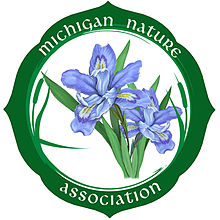
Houghton County is a county in the Upper Peninsula in the U.S. state of Michigan. As of the 2020 Census, the population was 37,361. The county seat and largest city is Houghton. Both the county and the city were named for Michigan State geologist and Detroit Mayor Douglass Houghton.

A nature reserve is a protected area of importance for flora, fauna, or features of geological or other special interest, which is reserved and managed for purposes of conservation and to provide special opportunities for study or research. They may be designated by government institutions in some countries, or by private landowners, such as charities and research institutions. Nature reserves fall into different IUCN categories depending on the level of protection afforded by local laws. Normally it is more strictly protected than a nature park. Various jurisdictions may use other terminology, such as ecological protection area or private protected area in legislation and in official titles of the reserves.
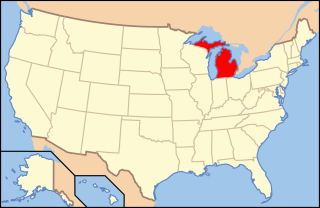
The following is an alphabetical list of articles related to the U.S. state of Michigan.

The Detroit Zoo is a zoo located in the cities of Huntington Woods and Royal Oak in the U.S. state of Michigan. Spanning 125 acres (50.6 ha), it houses more than 2,000 animals and more than 245 different species. It was the first U.S. zoo to feature bar-less habitats, and is regarded to be an international leader in animal welfare, conservation and sustainability by the Detroit Zoological Society.
The protected areas of Michigan come in an array of different types and levels of protection. Michigan has five units of the National Park Service system. There are 14 federal wilderness areas; the majority of these are also tribal-designated wildernesses. It has one of the largest state forest systems as well having four national forests. The state maintains a large state park system and there are also regional parks, and county, township and city parks. Still other parks on land and in the Great Lakes are maintained by other governmental bodies. Private protected areas also exist in the state, mainly lands owned by land conservancies.

The Wildlife Conservation Society (WCS) is a 501(c)(3) non-governmental organization headquartered at the Bronx Zoo in New York City, that aims to conserve the world's largest wild places in 14 priority regions. Founded in 1895 as the New York Zoological Society (NYZS), the organization is now led by President and CEO Cristián Samper. WCS manages four New York City wildlife parks in addition to the Bronx Zoo: the Central Park Zoo, New York Aquarium, Prospect Park Zoo and Queens Zoo. Together these parks receive 4 million visitors per year. All of the New York City facilities are accredited by the Association of Zoos and Aquariums (AZA).

Animal captivity is the confinement of domestic and wild animals. More specifically, animals that are held by humans and prevented from escaping are said to be in captivity. The term animal captivity is usually applied to wild animals that are held in confinement, but this term may also be used generally to describe the keeping of domesticated animals such as livestock or pets. This may include, for example, animals in farms, private homes, zoos, and laboratories. Animal captivity may be categorized according to the particular motives, objectives, and conditions of the confinement.

A dark-sky preserve (DSP) is an area, usually surrounding a park or observatory, that restricts artificial light pollution. The purpose of the dark-sky movement is generally to promote astronomy. However, astronomy is not the only objective of conserving a dark sky. A dark night sky is associated with many facets of history, philosophy, religion, societal development, poetry, song, mathematics, and science. Different terms have been used to describe the areas as national organizations have worked independently to create their programs. The International Dark-Sky Association (IDA) uses International Dark Sky Reserve (IDSR) and International Dark Sky Park (IDSP). A third designation, International Dark Sky Sanctuary, was introduced in 2015.

The Massachusetts Audubon Society, commonly known as Mass Audubon, founded in 1896 by Harriet Hemenway and Minna B. Hall and headquartered in Lincoln, Massachusetts, is a nonprofit organization dedicated to "protecting the nature of Massachusetts". Mass Audubon is independent of the National Audubon Society (NAS), and was founded earlier than the NAS. Mass Audubon protects more than 38,000 acres of land throughout Massachusetts, saving birds and other wildlife, and making nature accessible to all with its wildlife sanctuaries and 20 nature centers.
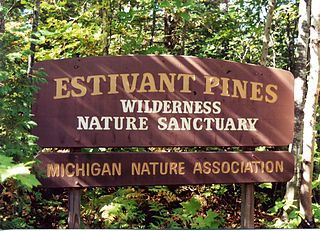
Estivant Pines Nature Sanctuary is a 508-acre (2.06 km2) nature sanctuary in Keweenaw County, Michigan. It is maintained and preserved by the Michigan Nature Association.

According to the California Protected Areas Database (CPAD), in the state of California, United States, there are over 14,000 inventoried protected areas administered by public agencies and non-profits. In addition, there are private conservation areas and other easements. They include almost one-third of California's scenic coastline, including coastal wetlands, estuaries, beaches, and dune systems. The California State Parks system alone has 270 units and covers 1.3 million acres (5,300 km2), with over 280 miles (450 km) of coastline, 625 miles (1,006 km) of lake and river frontage, nearly 18,000 campsites, and 3,000 miles (5,000 km) of hiking, biking, and equestrian trails.
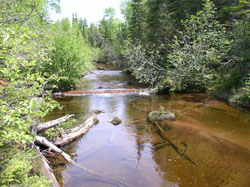
Black Creek Nature Sanctuary, commonly referred to as Black Creek, is a 242-acre (98 ha) nature sanctuary located in Keweenaw County, Michigan. It is maintained and preserved by the non-profit organization Michigan Nature Association, and is only one of many parks and sanctuaries maintained by the association in Keweenaw County. The Black Creek Nature Sanctuary provides varied landscapes, several beaver ponds, sand dunes fringed by giant white birch, mixed conifers, lowland hardwoods, and 1,500 feet (460 m) of Lake Superior shoreline.
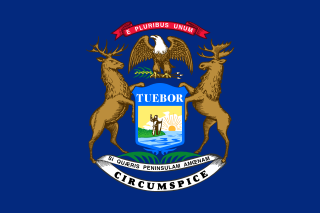
The following outline provides an overview of and topical guide to the U.S. state of Michigan:
Tourism in Odisha is one of the main contributors to the Economy of Odisha, India, with a 500 km (310 mi) long coastline, mountains, lakes, natural biodiversity and rivers. Odisha is one of the major tourism sectors of India, with various tourists' attractions, ranging from wildlife reserves, beaches, temples, monuments, the arts and festivals. Other than wildlife reserves, beaches, temples, monuments, the arts and festivals, the Odisha Tourism Development Corporation, a Public Sector Undertaking of Government of Odisha, is also developing tourism sector of Odisha and India.
Protected areas of Sri Lanka are administrated by Department of Forest Conservation and Department of Wildlife Conservation of Sri Lanka.There are 501 protected areas in Sri Lanka. The protected areas that fall under supervision of the Department of Forest Conservation include forests defined in National Heritage Wilderness Area Act in 1988, forest reservations, and forests managed for sustainability. Sinharaja Forest Reserve is an example for a National Heritage forest. There are 32 forests categorized as conservation forests including Knuckles Mountain Range. Strict nature reserves, national parks, nature reserves, forest corridors, and sanctuaries recognized under the Flora and Fauna Protection Ordinance are managed by Department of Wildlife Conservation. Total of all protected areas is 1,767,000 ha. Protected areas in Sri Lanka account for 26.5 percent of the total area. This is a higher percentage of protected areas than in all of Asia and much of the World.
Openlands is a non-profit conservation organization and accredited land trust that works with groups and individuals in northeastern Illinois, northwestern Indiana, and southeastern Wisconsin to preserve open space, develop walking and biking trails, restore natural areas, and connect people to the outdoors. Openlands has protected and expanded public access to more than 55,000 acres of land for parks, forest preserves, land and water greenway corridors, and urban gardens across the Chicago metropolitan region. It is a member of Chicago Wilderness.

Edith Mathews Gwynne Read was an American environmentalist who helped preserve open space and protect watercourses and wetlands in Westchester County, New York, especially Rye. Her leadership led to the creation of the Rye Nature Center and the Edith G. Read Wildlife Sanctuary that bears her name.
